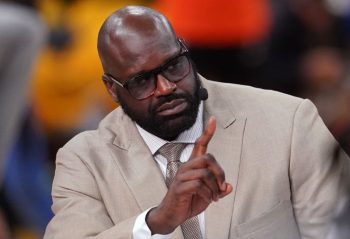NBA
NBA AM: Reading Players’ Faces

Back in 2009 there was this show on FOX called “Lie to Me,” and it focused on a Tim Roth character named Dr. Cal Lightman that specialized in reading microexpressions to solve crimes. It was sort of an emotional follow-up to House, M.D., and while it only lasted a few seasons, it brought this idea to the forefront of pop culture that it could be possible to determine what a person was really thinking through the tiniest hints of facial movement. Lightman had this way of getting to a person’s soul, no matter how badly they tried to hide it.
Recently, Gus Lubin of Inverse put together a fascinating article about the facial expressions of NBA players and what they really tell us about the dispositions of athletes. In the article, Lubin interviews facial coder Dan Hill, a man whose tactics are controversial yet still used occasionally by some big four professional teams, including the NBA’s Milwaukee Bucks.
In short, Hill is like a real-life Cal Lightman, reading the expressions of NBA players and analyzing what those expressions say about the players themselves.
While his technique is not verifiable in a clinical sense, the results of the Inverse article are deeply intriguing and, in some ways, sort of hilarious. Hill looked at 30+ images of the league’s biggest stars to determine how much of certain personalities traits show in their faces.
Photos of LeBron James, Kevin Durant, Stephen Curry, James Harden, Chris Paul, Kyrie Irving, Isaiah Thomas and Kawhi Leonard all were observed in this recreational study for joy, pleasure, satisfaction, acceptance, curiosity, alertness, skepticism, contempt, dislike, sadness, anxiety and frustration.
It should come as no surprise that every single athlete shows more frustration than anything. Despite there being 12 personalities traits listed, frustration makes up at least 30 percent of the pie for almost every single athlete considered, with one exception. Leonard, at 29.5 percent, was the least frustrated athlete, something that probably comes as a result of his stoic demeanor. Curry, for what it’s worth, was most frustrated, at 37.4 percent.
Of course, in terms of joy, those two players were flip-flopped. Curry shows joy in 12.3 percent of the images, and while most of the other players ended up somewhere in the range of three to eight percent, Leonard showed no inkling of joy or pleasure in any image. As the league’s most stoic player, this shouldn’t come as too big of a surprise.
In fact, Leonard had the dourest disposition of any player tested, with 83 percent of his expressions skewing negative. There are countless memes mocking Leonard’s stoicism, but Hill claims there’s more to the man than meets the eye. He believes Leonard is not necessarily a negative person, but “empathetic and contemplative and reflective.” He just manages all that without cracking a smile.
Durant skewed rather crabby, too, as did James, and Harden and Paul were heavy on frustration and anxiety. Isaiah Thomas, meanwhile, appeared rosier than any other player observed, with 41 percent of his expressions displaying positivity. More specifically, his expressions of satisfaction and acceptance were higher than any other player’s by a wide margin.
Hill also thought it prudent to observe the notoriously enigmatic San Antonio Spurs head coach Gregg Popovich. No player came anywhere near his 44.6 percent frustration, nor did anyone show less curiosity (0.6 percent). Any member of the media who ever has been in an interview scrum with him won’t be surprised by his 12.4 percent score for dislike, again the highest number in the study by a mile.
What does all of this mean for the season to come? Probably not a whole lot, but that doesn’t make it any less interesting. Leonard already has been spotted smiling this summer, so perhaps a future exploration of player expressions will yield different results, especially with so many of the players observed having changed teams this summer. Will Durant be less frustrated now that he has a ring? Will Irving be less curious now that he’s taken control of his own fate? Will Thomas grow less positive in dealing with an injury and following his exile from Boston?
These are great questions. Perhaps the answers lie in the players’ faces.
Check out the Inverse article for more detailed breakdowns of each player’s emotional profile, and judge for yourself how valid Hill’s research really is.











